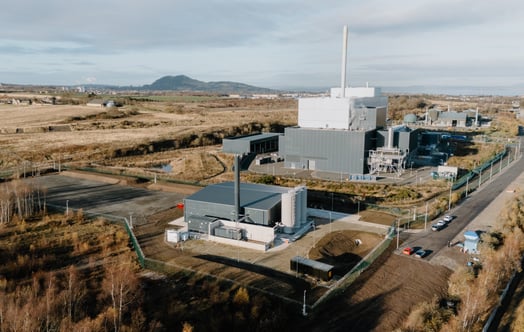
A number of considerations are required to minimise the cost of introducing heat networks and increase their effectiveness.
The problem
To achieve net zero greenhouse gas emissions, we must decarbonise heating. Heating buildings accounted for ~33% of the UK’s CO2 emissions in 20181. This is higher than power generation, which has made substantial headway in CO2 emission reductions in recent years. The transport sector is also making progress, with increased focus on air quality and uptake of electric vehicles.
However, improving the energy efficiency of a home lacks the kudos of buying an electric car, and it is less prominent than sustainable power generation in public discussion. Traditionally, gas heating has been the method preferred in the UK, due to its availability and low price. Its convenience, and the lack of effective policy decisions to support alternatives means that it remains the choice for many consumers. How we achieve the shift from gas is a key area that must be addressed to decarbonise heating.
Heat networks
One low-carbon solution is heat networks, also known as district heating – the distribution of thermal energy, usually from a central source, to a number of buildings via a network of buried underground pipes. In some situations, this will be the lowest cost method of decarbonising heat, but there are a number of considerations required to minimise the cost of introducing heat networks. These considerations are around location, building type, and engagement with the customer.
Put simply, context is as important as technology in determining the cost of decarbonising heat. Wide-scale installation of heat networks without considering these factors would not be the best decision in terms of value for money for the end consumer.
The importance of location and technology
Heat networks are most appropriate where many customers can be served by the same length of piping, and where it is cheap to lay that piping. Differentiation by technology is well-known in terms of the policy surrounding delivery of electricity, but it is less well-known when it comes to district heating. Combining an understanding of building, technology, and location creates the capacity to significantly reduce the cost of transition to low-carbon heating solutions such as heat networks.
Delivering heat networks
There are three areas which need to be addressed to deliver heat networks on a significant scale and help accelerate the decarbonisation of heating in the UK. The first is location, identifying the geographic areas where heat networks offer the cheapest low-carbon solution. These areas have to be mapped clearly as zones, with specific rights given to enable the development of heat networks.
The second is coordination between low-carbon heat sources, the heat network operator, heat consumers and policy makers to maximise the proportion of local heat load connecting to the network, minimising infrastructure and spreading the costs of installation as widely and fairly as possible.
The third is the cost of capital. This is disproportionately high for heat networks, compared to electricity and gas networks, which have a regulatory framework effectively isolating them from variation in the volume of energy they are required to deliver. Heat networks do not enjoy this luxury, meaning that investors demand a higher rate of return, for additional risk exposure.
Heat zoning
One way of addressing these areas is through heat zoning. This arrangement is where local authorities identify a specific area with identified heat network potential, and then award exclusive rights to a district heat network operator to develop a heat network within a certain time frame. One way this can work is that building owners in the area have an obligation to connect to the network unless they can demonstrate that there is an alternative option that would achieve the same (or better) level of decarbonisation, at the least cost to the customer. For new builds this would be at the planning application stage, and for existing buildings, this can be at the time when existing gas boilers are going to be replaced. This enables the heat network operator to have more certainty of heat demand, and simultaneously discourages heat users in the zone from investing in individual solutions which would undermine the case for the network. This zoning approach will help achieve the lowest cost to decarbonising heat, both for consumers and for the UK as a whole.
Vattenfall Heat UK is keen to continue driving the conversation on how we get to secure, affordable, low carbon heat, which is vital to help the UK 's target to be net zero by 2050.



